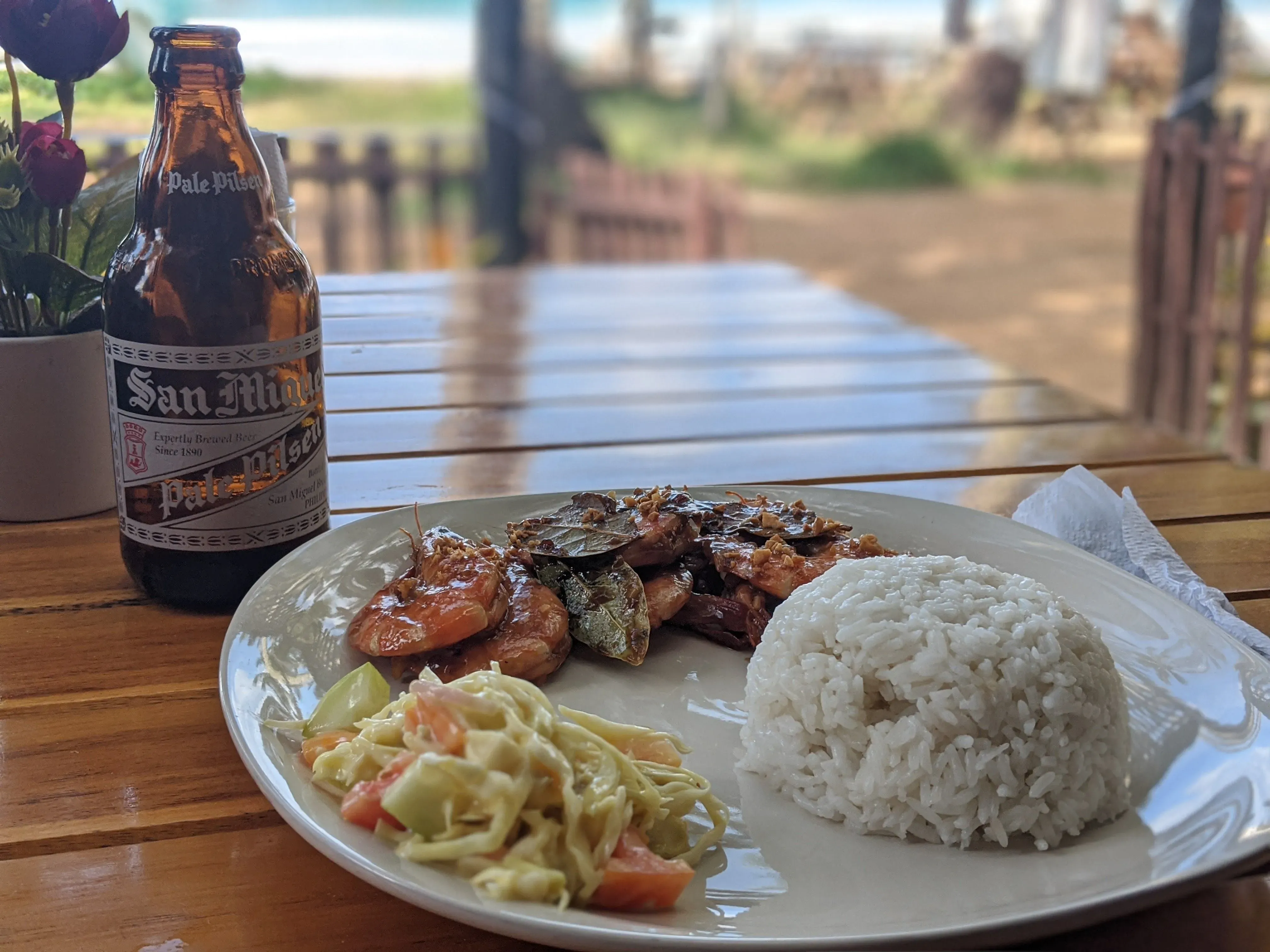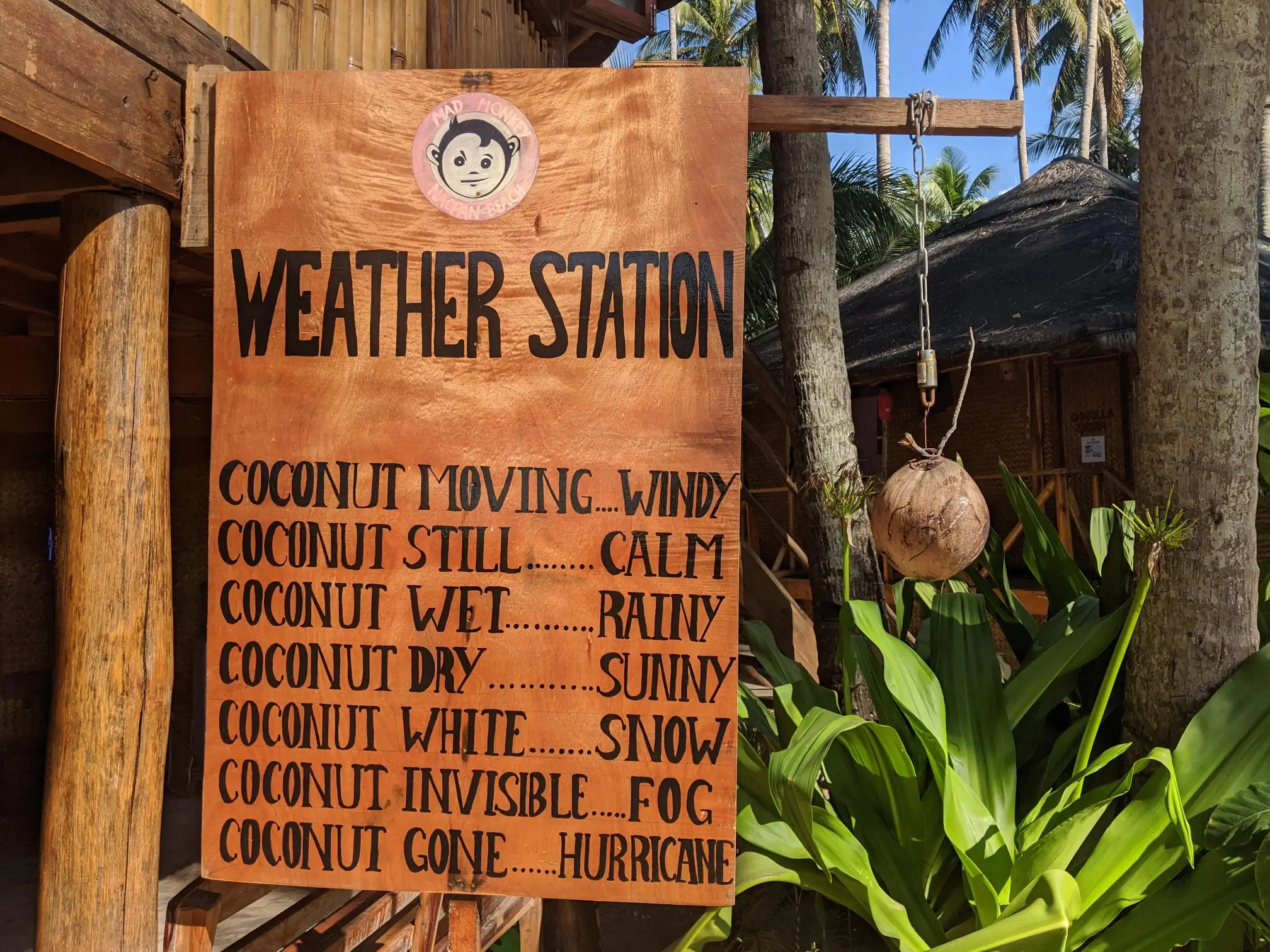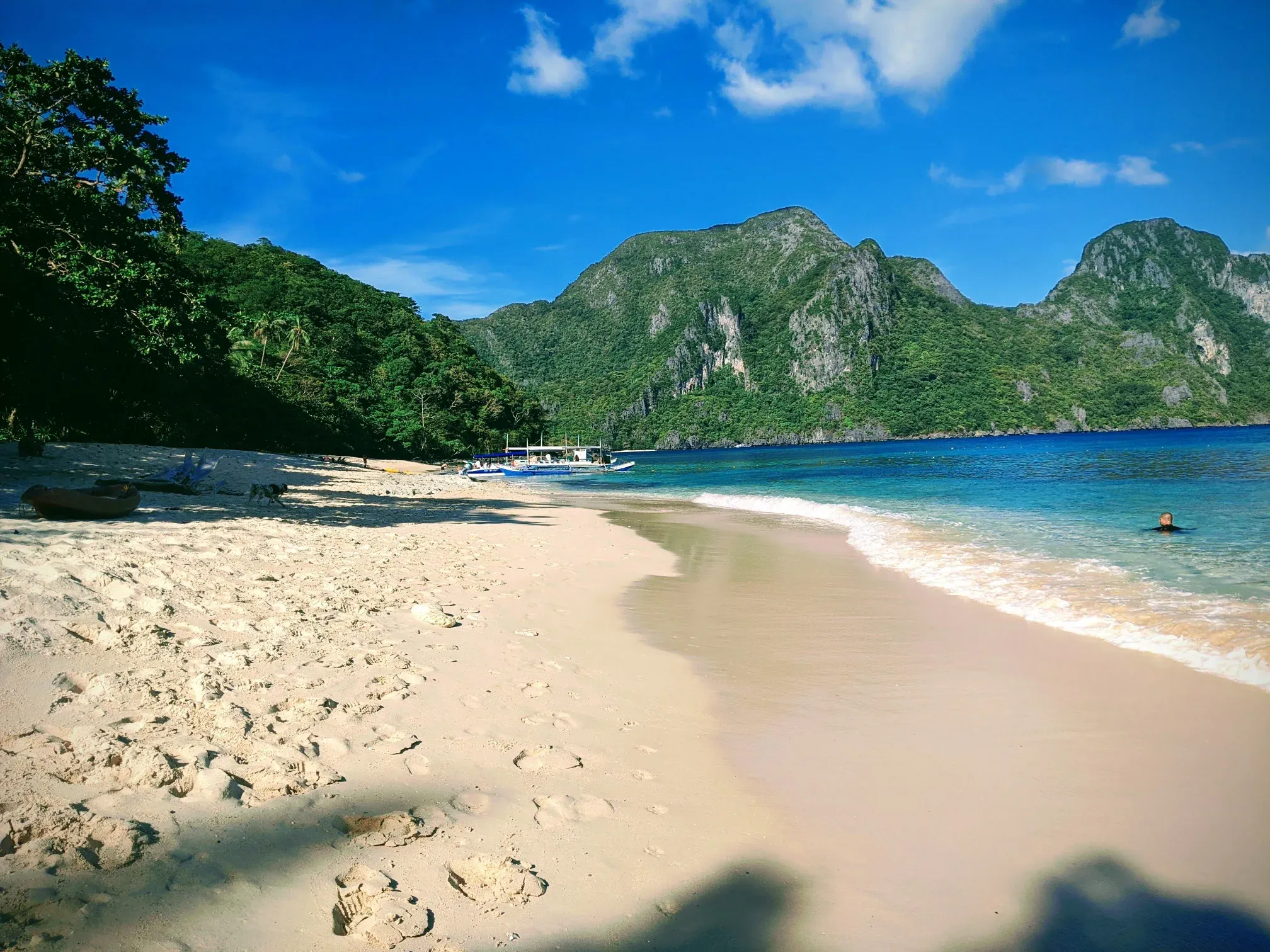10 lời khuyên du lịch Philippines của INSIDER (do người dân địa phương viết)
Bài đăng của khách từ Project Untethered
Bản tóm tắt
- 1. Kiểm tra thời tiết trước khi đi du lịch
- 2. Mang theo eSim hoặc WiFi di động
- 3. Đặt phòng trước để tránh mùa cao điểm
- 4. Thử ẩm thực địa phương
- 5. Hãy chuẩn bị tinh thần cho sự chậm trễ ở bất cứ nơi nào bạn đến
- 6. Giao thông công cộng không phải là tốt nhất
- 7. Bảo vệ đồ đạc của bạn
- 8. Mọi người đều nói tiếng Anh
- 9. Đi du lịch đảo
- 10. Luôn mang theo tiền mặt
Chuyến đi đến Philippines không chỉ là nơi bạn đến mà còn là niềm vui bạn có được trên suốt chặng đường.
Để tận hưởng trọn vẹn niềm vui, có một số điều quan trọng bạn cần biết — những điều có thể làm hỏng kế hoạch du lịch của bạn nếu bạn không cẩn thận.
Về tác giả

Tên tôi là Lianne, tôi đã sốngtoàn bộ mạng sốngở Philippines. Hiện tại tôi đang đi du lịch khắp đất nước với tư cách là một người du mục kỹ thuật số trong khi làm việc với tư cách là người sáng tạo nội dung choBlog du lịch của Project Untethered.
Vì vậy, nếu bạn đang tìm kiếm mẹo du lịch Philippines thì tôi chính là người bạn cần.
Chúng ta hãy cùng tìm hiểu nhé.
1. Kiểm tra thời tiết trước khi đi du lịch
Philippines là điểm nóng của bão. Trên thực tế,8 đến 9 cơn bão nhiệt đớitấn công đất nước này hàng năm, chủ yếu từ tháng 6 đến tháng 10. Tuy nhiên, bão cũng thỉnh thoảng đổ bộ vào mùa hè ở Philippines, từ tháng 3 đến tháng 5.
Nếu bạn đi du lịch trong những tháng này, bạn nên kiểm tra thời tiết trước khi bắt đầu chuyến đi cũng như kiểm tra thời tiết hàng ngày trong suốt chuyến đi.
Điều này nghe có vẻ hiển nhiên, nhưng điều cuối cùng bạn muốn là bị mắc kẹt trên một hòn đảo trong cơn bão. Bạn cũng không muốn đồ đạc của mình bị ngập, đặc biệt là ở những khu vực gần biển hoặc sông.
Nếu bạn đang ở Philippines và biết tin một cơn bão sắp đổ bộ, đừng hoảng sợ.
Mục tiêu của bạn là dự trữ thực phẩm và nhu yếu phẩm, đồng thời tìm một nơi an toàn để ở (ví dụ: chuyển ra khỏi ngôi nhà gỗ ọp ẹp trên bãi biển đến một khách sạn được xây dựng tốt).
Các trung tâm thương mại thường mở cửa, nhưng một số cửa hàng nhỏ hơn như hiệu thuốc và ngân hàng có thể đóng cửa.
Các chuyến bay và lịch trình phà cũng bị hủy, do đó bạn sẽ phải chịu thêm căng thẳng khi phải đặt lại chuyến bay hoặc sắp xếp lại hành trình.
Tuy nhiên, thời điểm tốt nhất để đến Philippines thường là từ tháng 12 đến tháng 5 khi thời tiết dễ dự đoán và dễ chịu hơn.
Vâng, bạn sẽ phải trả giá cao hơn một chút và phải chia sẻ bãi biển với nhiều người hơn. Nhưng bạn sẽ không phải lo lắng về thời tiết.
Mặc dù tất cả đều là một phần của cuộc phiêu lưu, nhưng việc lên kế hoạch một chút sẽ giúp chuyến đi suôn sẻ và thú vị hơn.
2. Mang theo eSim hoặc WiFi di động
WiFi ở Philippines có lúc tốt lúc không. Hầu hết các khách sạn và quán cà phê ở khu vực thành thị đều có WiFi, nhưng không có nhiều ở các đảo nông thôn (hay còn gọi là những nơi đẹp nhất).
Cách dễ nhất để duy trì kết nối là lắp thẻ SIM hoặc eSIM vào điện thoại của bạn.
Thật tiện lợi và giúp bạn truy cập Internet ổn định để làm việc, duyệt web hoặc giữ liên lạc với những người thân yêu.
Có một số loại SIM trả trước mà bạn có thể lựa chọn, nhưng Globe và Smart thường là lựa chọn hàng đầu của khách du lịch.
Một số sân bay bán thẻ SIM, nhưng một số khác thì không. Nếu không, bạn sẽ phải đi săn. Một lựa chọn là đến trực tiếp cửa hàng Globe hoặc Smart, thường có trong các trung tâm thương mại.
Bạn cũng có thể tìm thấy chúng ở một số cửa hàng tiện lợi 7/11, nhưng chúng có thể không được bán rộng rãi, vì vậy bạn cần phải kiên nhẫn.
Ngoài ra, eSIM Nomad là lựa chọn tiện lợi vì sử dụng mạng Globe, có vùng phủ sóng mạnh trên khắp Philippines.
Chúng cũng dễ dàng tự cài đặt và bạn có thể làm trước khi rời khỏi nhà. Điều đó giúp bạn tiết kiệm được công sức tìm kiếm thẻ SIM vật lý khi bạn đến nơi.
Để có cái nhìn đầy đủ về cách thức hoạt động của dịch vụ, hãy xemĐánh giá eSIM Nomadchia sẻ những hiểu biết chân thực từ một du khách đã thử nghiệm eSIM trên khắp Đông Nam Á.
Các trung tâm thương mại và nơi công cộng thường cung cấp WiFi công cộng miễn phí, nhưng tôi sẽ không phụ thuộc quá nhiều vào nó. Tốc độ có thể khá hạn chế và tín hiệu không phải lúc nào cũng tốt.
Bạn có thể sử dụng wifi công cộng trong trường hợp khẩn cấp — như gửi tin nhắn hoặc tìm kiếm trên internet chậm. Nhưng đừng trông chờ vào nó để lướt Instagram hoặc lên kế hoạch cho các bước tiếp theo của chuyến đi.
3. Đặt phòng trước để tránh mùa cao điểm
Nếu bạn muốn tiết kiệm một ít tiền khi đi du lịch, hãy đặt vé trước. Vé máy bay, khách sạn và tour du lịch sẽ đắt hơn khi bạn đặt gần ngày đi.
Mùa cao điểm du lịch trong nước cũng là điều bạn cần cân nhắc khi lên kế hoạch cho chuyến đi của mình.
Thông thường là từ tháng 12 đến tháng 5 trong các ngày lễ như Giáng sinh, Năm mới và Tuần Thánh.
Trong thời gian này, các điểm đến hàng đầu sẽ chật kín du khách nước ngoàiVàngười dân địa phương đi du lịch trong nước.
Ngoài đám đông, bạn có thể mong đợi giá cao hơn trong thời gian này. Nhưng như đã đề cập, bạn cũng sẽ có thời tiết tốt hơn.
4. Thử ẩm thực địa phương
Cách tốt nhất để tìm hiểu về bất kỳ nền văn hóa nào là thông qua ẩm thực. Và Philippines không thiếu những món ngon địa phương.
Ngoài những điều thông thườngadobo hoặc lechonMỗi vùng miền đều có món ăn độc đáo riêng mà bạn không thể tìm thấy ở bất kỳ nơi nào khác.
Tôi khuyên bạn nên thửnằmkhi bạn đến thăm Bicol. Đây là món ăn rau được làm từ lá khoai môn ngâm trong nước cốt dừa và ớt cay.
Nếu bạn cảm thấy thích phiêu lưu, bạn có thể thử đồ ăn đường phố nhưtôi đã thấy(ruột gà),betamax(xúc xích huyết heo), hoặc món tôi thích nhất,trứng vịt lộn(phôi trứng vịt đã thụ tinh).
Điều quan trọng là phải giữ một tâm trí cởi mở và một bảng màu tò mò.
Hãy tìm những quầy hàng rong đông đúc vì đây là dấu hiệu cho thấy nơi đó phục vụ hàng thật.
Để có trải nghiệm thực sự đắm chìm, hãy hỏi người dân địa phương. Họ luôn biết những địa điểm tốt nhất để thưởng thức món ăn Philippines chính thống và ngon miệng.

5. Hãy chuẩn bị tinh thần cho sự chậm trễ ở bất cứ nơi nào bạn đến
Ở Philippines, thời gian rất linh hoạt.
Điều này có nghĩa là lịch trình giống như hướng dẫn hơn là quy tắc nghiêm ngặt. Chúng tôi gọi đó là 'Giờ Philippines'.
Đây là thói quen được truyền lại từ người Tây Ban Nha đã xâm chiếm đất nước này hàng trăm năm trước.
Cho dù là vận chuyển, dịch vụ tại nhà hàng hay thậm chí là các tour du lịch có tổ chức, sự chậm trễ là điều thường xảy ra.
Điều này cũng giống nhau dù bạn ở một thành phố lớn như Manila hay một thị trấn bãi biển ở Palawan.
Bạn cũng có thể phải chờ đợi đôi chút ở sân bay.
Nghe có vẻ bất tiện, nhưng lối sống thoải mái này lại là một phần quan trọng trong văn hóa địa phương, vì vậy tốt nhất là bạn nên áp dụng một lộ trình linh hoạt.
Luôn dành thêm thời gian cho việc đi lại và các hoạt động, và tận dụng những khoảng dừng bất ngờ này để đắm mình vào vẻ đẹp của cảnh quan xung quanh.
6. Giao thông công cộng không phải là tốt nhất
Du lịch vòng quanh Philippines bằng phương tiện công cộng có thể là một trải nghiệm khá thú vị.
Xe buýt, xe jeepney và xe ba bánh là những phương tiện giao thông công cộng chính.
Khi đi xe buýt hoặc xe jeepney, hãy nhìn vào biển báo trên cửa sổ bên cạnh tài xế để biết điểm đến. Giá cả thay đổi tùy thuộc vào nơi bạn đến nên tốt nhất là bạn nên hỏi giá.
Khi trả tiền xe buýt, một nhân viên soát vé xe buýt sẽ đến gần bạn. Đối với xe jeepney, bạn đưa cho người bên cạnh để họ đưa cho tài xế.
Xe ba bánh (xe ba bánh chở khách tương tự như xe tuktuk hoặc xe kéo) là lựa chọn tốt cho những nơi không có phương tiện giao thông công cộng nào khác.
Nếu bạn ở Metro Manila, bạn cũng có thể sử dụngMRT và LRThệ thống giao thông công cộng. Bạn có thể sử dụng thẻ beep, là thẻ có thể nạp lại, hoặc vé một chiều. Chỉ cần đến quầy thu ngân tại bất kỳ nhà ga nào để lấy loại bạn chọn.
Tuy nhiên, hãy chuẩn bị tinh thần cho những không gian đông đúc và lịch trình không thể đoán trước.
Một lựa chọn thuận tiện hơn là đi taxi hoặc đặt xe chung Grab.
Nếu bạn có ngân sách, bạn cũng có thể thuê ô tô hoặc xe máy. Có rất nhiều dịch vụ cho thuê xe tại các điểm du lịch nổi tiếng.
Hầu hết các thành phố lớn đều có đường nhựa tốt để lái xe. Ở các vùng nông thôn, đường có thể gập ghềnh và nhiều đá với động vật thường bất ngờ lao ra đường — vì vậy hãy hết sức cẩn thận nếu đi xe máy.
Trong hầu hết các trường hợp, bạn sẽ ghé thăm nhiều hơn một hòn đảo, nghĩa là bạn cũng sẽ phải đi chuyến bay nội địa hoặc phà. Bạn nên chuẩn bị cho việc phải xếp hàng dài, đặc biệt là trong mùa cao điểm.
Lời khuyên của tôi là bạn nên đến sân bay hoặc bến phà ít nhất 3-4 giờ trước giờ khởi hành để có đủ thời gian ký gửi hành lý, thanh toán phí và đảm bảo vé hoặc thẻ lên máy bay.
7. Bảo vệ đồ đạc của bạn
Người Philippines rất thân thiện và hiếu khách. Nhưng giống như bất kỳ điểm đến phổ biến nào, luôn có nguy cơ trộm cắp vặt, đặc biệt là ở những điểm du lịch đông đúc.
Luôn để mắt đến đồ đạc của bạn. Sử dụng ba lô chống trộm hoặc thắt lưng đựng tiền để an toàn hơn.
Ở những nơi đông đúc, hãy mang túi xách trước mặt và cảnh giác với những trò lừa đảo có thể là thủ đoạn móc túi. Một số trò lừa đảo phổ biến bao gồm trẻ em đường phố xin tiền hoặc người lạ ngẫu nhiên trò chuyện với bạn bằng tiếng Anh hoàn hảo.
Cố gắng không khoe đồ trang sức hoặc đồ dùng đắt tiền. Nếu bạn ở trong nhà trọ, hãy sử dụng két sắt hoặc tủ đựng đồ cho đồ có giá trị của bạn.
Một mẹo khác là hãy chuẩn bị bản sao các giấy tờ quan trọng như hộ chiếu và CMND.
Nếu đồ đạc của bạn bị đánh cắp, hãy lưu ý rằng các thủ tục của cảnh sát địa phương có thể kéo dài và căng thẳng. Việc lấy lại đồ bị mất không phải lúc nào cũng được đảm bảo.
Tốt nhất là bạn nên thực hiện các biện pháp tránh những tình huống này để có thể tận hưởng chuyến đi ở Philippines mà không phải lo lắng.
8. Mọi người đều nói tiếng Anh
Một trong những tiện lợi lớn nhất khi đi du lịch ở Philippines là mọi người đều biết tiếng Anh.
Đây là một trong những ngôn ngữ chính thức và hầu hết người Philippines đều nói trôi chảy.
Điều này giúp việc giao tiếp trở nên dễ dàng, dù bạn đang hỏi đường, gọi đồ ăn hay trò chuyện với người dân địa phương.

Điều này cũng có nghĩa là các biển báo, thực đơn và hướng dẫn du lịch thường có sẵn bằng tiếng Anh, giúp việc di chuyển trở nên dễ dàng hơn.
Tuy nhiên, biết một số từ tiếng Philippines cơ bản vẫn rất hữu ích.
Những cụm từ đơn giản như “Salamat” (Cảm ơn) và “Magandang umaga” (Chào buổi sáng) có thể thể hiện sự tôn trọng đối với người dân địa phương.
9. Đi du lịch đảo
Đi tham quan đảo là điều không thể bỏ qua khi đến Philippines, nơi có hơn 7.000 hòn đảo.
Mỗi hòn đảo đều có nét quyến rũ riêng, và mặc dù bạn muốn khám phá càng nhiều càng tốt, nhưng điều quan trọng là không nên làm quá chuyến đi của mình.
Dành thời gian để thực sự khám phá và đánh giá cao từng hòn đảo sẽ giúp nâng cao trải nghiệm.
Tôi đề xuất các đảo như Boracay, Siargao, Palawan và Cebu. Những bãi biển ở đó thật không thể tin được.
Nhưng đảo Siquijor là nơi tôi thích nhất. Đảo này không nổi tiếng bằng những đảo khác mà tôi đã đề cập, nhưng điều đó có nghĩa là ít đám đông hơn và môi trường thư giãn hơn.
Khi chuẩn bị hành lý cho những cuộc phiêu lưu này, tính thực tế là yếu tố quan trọng nhất.
Hãy nhớ mang theo giày đi nước để bảo vệ chân bạn khỏi đá sắc nhọn và rạn san hô. Một chiếc hộp chống nước cho các thiết bị của bạn cũng hữu ích.
Quan trọng nhất là tôn trọng môi trường địa phương. Tránh xả rác, không gây hại cho động vật hoang dã và tuân thủ các hướng dẫn bảo tồn địa phương.
Vẻ đẹp thiên nhiên của Philippines thật ngoạn mục và xứng đáng với công sức bảo tồn.

10. Luôn mang theo tiền mặt
Trong khi thẻ tín dụng được chấp nhận ở các thành phố lớn, tiền mặt vẫn được ưa chuộng ở nhiều nơi tại Philippines.
Hãy ghi nhớ điều này nếu bạn có ý định khám phá những điểm đến ít người biết đến như Sagada và Đảo Batanes.
Một điều cần lưu ý là phí ẩn. Ở một số vùng xa xôi, phí bổ sung cho giao dịch thẻ là thông lệ phổ biến.
Thêm vào đó, máy ATM không phải lúc nào cũng có sẵn. Khi bạn tìm thấy chúng, chúng có thể có hạn mức rút tiền thấp hơn so với những gì bạn thường thấy.
Tốt nhất là bạn nên rút đủ tiền mặt ở các thị trấn hoặc thành phố lớn trước khi đến những địa điểm vắng vẻ hơn.
Những tờ tiền có mệnh giá nhỏ hơn sẽ tiện dụng cho những giao dịch mua sắm hàng ngày như thực phẩm, đồ trang sức hoặc phương tiện giao thông địa phương, trong khi những tờ tiền có mệnh giá lớn hơn sẽ hữu ích cho những khoản chi tiêu lớn hơn như chỗ ở.
Có rất nhiều nơi đổi tiền, nhưng tỷ giá hối đoái có thể thay đổi.
Máy đổi tiền ở sân bay thường có tỷ giá hối đoái thấp hơn so với ở các trung tâm thương mại.
Hãy ghi nhớ những mẹo này để du lịch Philippines như người dân địa phương!